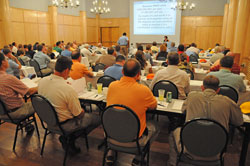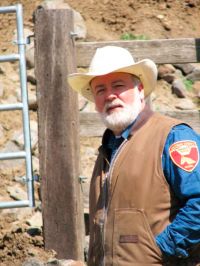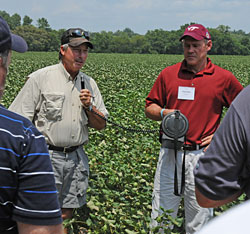Playing catch-up here on news from the past week out of BASF Crop Protection
 First, the company recently released “Top Plots: Episode 2” starring award-winning corn and soybean farmer Gary Porter of Mercer, Missouri. In the video, Porter shares how he began farming with his father in the 1970’s in an area not known for deep fertile crop ground – the far northern part of Missouri. Despite facing challenging land every year, Porter consistently ranks high in the National Corn Grower Association (NCGA) National Corn Yield Contest and won the competition in both 1994 and 2003.
First, the company recently released “Top Plots: Episode 2” starring award-winning corn and soybean farmer Gary Porter of Mercer, Missouri. In the video, Porter shares how he began farming with his father in the 1970’s in an area not known for deep fertile crop ground – the far northern part of Missouri. Despite facing challenging land every year, Porter consistently ranks high in the National Corn Grower Association (NCGA) National Corn Yield Contest and won the competition in both 1994 and 2003.
Also, BASF is in the final stages of defining Initium® fungicide, a new active ingredient designed to protect a wide array of specialty crops and ornamentals from disease. Research on Zampro™ fungicide—a new multi-mode preventative fungicide for specialty crops, and Orvego™ fungicide—a formulation specifically for the greenhouse and nursery markets was presented at the recent American Phytopathological Society (APS) in Charlotte, NC. EPA registrations for the products are expected in 2012.
 Last, but certainly not least at all – BASF is proud to announce that Kixor® herbicide technology was the largest new herbicide product launch in two decades, applied to more than 10 million acres in first year. Launched almost a year ago in September 2009, the Kixor chemistry powers a family of four products – Sharpen™ herbicide, OpTill™ herbicide, Integrity™ herbicide and Treevix™ herbicide. Mike Hofer, Kixor Marketing Manager, says the new herbicide chemistry has been successful in part because it addresses two of the most common challenges faced by growers – managing input costs and protecting yields – by controlling broadleaf weeds quickly and providing residual activity on tough broadleaf weeds.
Last, but certainly not least at all – BASF is proud to announce that Kixor® herbicide technology was the largest new herbicide product launch in two decades, applied to more than 10 million acres in first year. Launched almost a year ago in September 2009, the Kixor chemistry powers a family of four products – Sharpen™ herbicide, OpTill™ herbicide, Integrity™ herbicide and Treevix™ herbicide. Mike Hofer, Kixor Marketing Manager, says the new herbicide chemistry has been successful in part because it addresses two of the most common challenges faced by growers – managing input costs and protecting yields – by controlling broadleaf weeds quickly and providing residual activity on tough broadleaf weeds.
There you go – all caught up on the latest BASF news!
 The 10th annual Boehringer Ingelheim North Carolina Swine Health Seminar is in session. We’ve got a classroom full and an all day program.
The 10th annual Boehringer Ingelheim North Carolina Swine Health Seminar is in session. We’ve got a classroom full and an all day program.



 The event is co-sponsored by the
The event is co-sponsored by the  First, the company recently released
First, the company recently released  Last, but certainly not least at all – BASF is proud to announce that Kixor® herbicide technology was the largest new herbicide product launch in two decades, applied to more than 10 million acres in first year.
Last, but certainly not least at all – BASF is proud to announce that Kixor® herbicide technology was the largest new herbicide product launch in two decades, applied to more than 10 million acres in first year.  During the Conservation in Action Tour one of our farm stops was the Carter Farm where we met Jon Black (pictured left). He gave us a presentation on no-till cotton which he is standing in. I caught up to him on the phone afterward since we didn’t have time for an interview there.
During the Conservation in Action Tour one of our farm stops was the Carter Farm where we met Jon Black (pictured left). He gave us a presentation on no-till cotton which he is standing in. I caught up to him on the phone afterward since we didn’t have time for an interview there.
 When it comes to food we all need a little bit of truth. Well, maybe a lot of truth. So
When it comes to food we all need a little bit of truth. Well, maybe a lot of truth. So